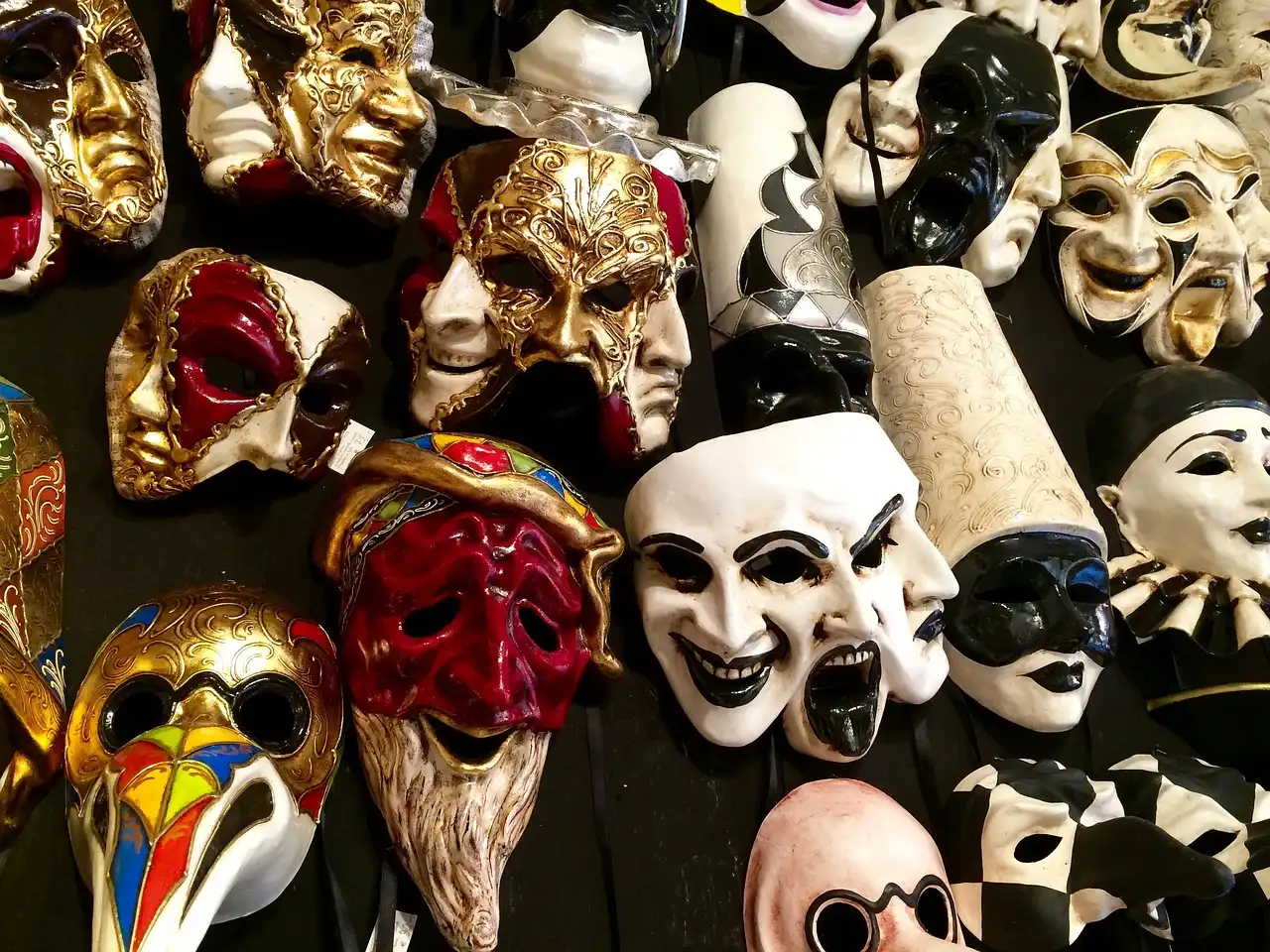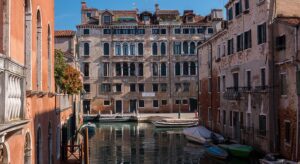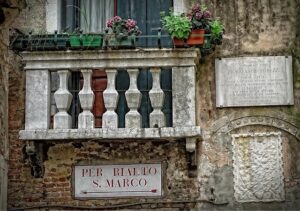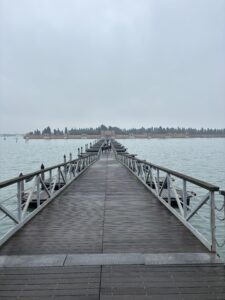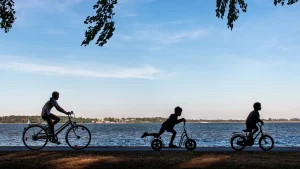When Travel Becomes Too Much: Understanding Overtourism and How to Travel Responsibly in Venice
Travel is one of life’s greatest pleasures — a bridge between people, cultures, and stories. Exploring new cities, tasting local flavors, standing before timeless art — these experiences connect us to humanity itself. But what happens when there are too many of us chasing the same moments in the same places?
Welcome to the era of overtourism.
The term describes what happens when tourism overwhelms a destination — when crowds outnumber residents, heritage sites suffer, and local life begins to disappear. It’s a word now tied to cities like Venice, Barcelona, Dubrovnik, and Amsterdam — and even to natural wonders like Machu Picchu and Mount Everest.
In this article, we’ll look beyond headlines to understand:
- What overtourism is — and why it happens.
- How it affects locals, travelers, and the planet.
- What’s happening in Venice — the world’s most famous case study.
- And how travelers and guides like Tour Leader Venice are changing the story.
🧭 Part 1 — What Is Overtourism?
1.1 Definition
Overtourism happens when the number of visitors exceeds what a place can handle — socially, culturally, or environmentally. It’s when tourism stops being a joy and starts being a burden.
- Residents can’t live comfortably.
- Heritage and ecosystems suffer damage.
- Even visitors feel frustrated, crowded, or disappointed.
In short, it’s too much of a good thing.
1.2 Why It Happens
Modern travel is easier, faster, and cheaper than ever. That accessibility, while wonderful, creates pressure on fragile destinations. Factors include:
- Low-cost flights making weekend getaways effortless.
- Cruise ships bringing thousands of passengers for short day stops.
- Social media turning landmarks into viral “must-see” selfies.
- Short-term rentals like Airbnb reducing homes for locals.
- Mass-market tours prioritizing quantity over quality.
Tourism itself isn’t the problem — it’s imbalance. When visitors outnumber locals and infrastructure can’t keep up, the magic fades.
🚶♀️ Part 2 — Overtourism in Venice: Beauty Under Pressure
2.1 The City of 50,000 Hosting 20 Million
Venice may be small — under 50,000 residents in its historic center — but it receives over 20 million visitors each year. On busy days, more people cross the Rialto Bridge than live in the entire city.
The issue isn’t tourism itself, but the kind of tourism:
- Day-trippers from cruise ships or buses who spend little but crowd a lot.
- Short-term rentals converting family homes into tourist apartments.
- Seasonal peaks — Carnival and summer — when narrow alleys overflow.
Venice, with its fragile foundations and finite space, simply wasn’t built for modern mass tourism.
2.2 Daily Life Under Pressure
For locals, the effects are tangible:
- Bridges jammed with crowds make daily commutes difficult.
- Essential shops close, replaced by souvenir stalls.
- Housing costs skyrocket, forcing families to move to the mainland.
- Waste collection and transport services are strained.
One Venetian once told us, “Every morning I leave my house and feel like an extra in someone else’s movie.”
2.3 Environmental Strain
Until 2021, massive cruise ships entered the lagoon, shaking fragile foundations with their wakes. Even with restrictions, the impact lingers:
- Foot traffic wears down centuries-old stones.
- Pollution from transport and crowds affects air and water.
- Rising waste volumes challenge collection systems built for smaller populations.
The lagoon ecosystem — once self-balancing — now battles human overuse and climate stress simultaneously.
2.4 Cultural Erosion
When daily life bends to tourism, culture changes too. Venetian crafts like Murano glass and Burano lace struggle to compete with factory-made imports. The Carnival, once a neighborhood celebration, has become a stage set for selfie crowds. And the Venetian dialect — once heard in every campo — now fades under multilingual noise.
🌎 Part 3 — A Global Problem, Not Just Venice
Venice is the symbol, but not the exception. Across the world, destinations face the same challenge: how to welcome guests without losing their essence.
- Barcelona: Residents protest rising rents and tourist crowds in the Gothic Quarter. The city caps cruise ships and taxes short stays.
- Dubrovnik: After Game of Thrones, the Old Town was flooded with fans. Officials limited cruise arrivals to protect UNESCO heritage.
- Amsterdam: Tired of “party tourism,” it banned new hotels and increased tourist taxes to support public services.
- Machu Picchu: Timed entry tickets now limit visitors to protect ancient stones from erosion.
- Mount Everest: “Traffic jams” of climbers prompted Nepal to tighten permits after deadly seasons.
The message is clear: overtourism is global — and growing.
📉 Part 4 — The Ripple Effects of Overtourism
4.1 On Locals
- Loss of affordable housing due to short-term rentals.
- Rising costs of food, transport, and utilities.
- Cultural traditions reshaped for tourists rather than residents.
- Decline in quality of life — too many people, too little space.
4.2 On Travelers
- Crowded attractions and long lines.
- Experiences that feel inauthentic or rushed.
- Environmental guilt — the uneasy feeling of contributing to the problem.
Overtourism diminishes the magic for everyone — locals and visitors alike.
4.3 On Businesses and the Economy
Mass tourism brings quick profits but long-term risks. When a city loses its residents and authenticity, it eventually loses its allure. That’s why smart destinations now focus on quality, not quantity — inviting fewer guests, but treating them better.
4.4 On Heritage and Environment
- Erosion of ancient stones and bridges.
- Pollution from ships, planes, and buses.
- Stress on fragile ecosystems — coral reefs, mountain trails, wetlands.
Every footprint leaves a mark — physical, cultural, emotional.
🧠 Part 5 — The Psychology Behind It
Most tourists never intend harm. Each traveler thinks, “It’s just me — one visit can’t hurt.” But multiply that thought by millions, and even the most resilient city begins to crack.
Social media accelerates the effect. A single viral photo can transform a quiet alley into a crowd magnet overnight. What was once a hidden gem becomes an Instagram queue.
Venice knows this too well — just think of the Rialto selfie rush or gondola gridlocks in high season.
💡 Part 6 — Can Overtourism Be Solved?
6.1 Managing Numbers
- Visitor caps and timed entry tickets for sensitive sites.
- Limits on cruise ship arrivals.
- Tourist taxes funding city maintenance.
6.2 Spreading the Flow
- Promoting lesser-known neighborhoods like Cannaregio or Castello.
- Encouraging off-season travel — Venice in autumn and winter is magical.
- Highlighting nearby gems: Treviso, Verona, Vicenza, or the Dolomites.
6.3 Regulating Rentals
- Limiting Airbnb licenses to protect local housing.
- Taxing short-term rentals to support public services.
- Offering incentives for residents to stay in the city center.
6.4 Raising Awareness
Education is key. Travelers can make a difference simply by choosing consciously:
- Opt for slow travel — stay longer, move slower, learn deeper.
- Support local artisans and authentic workshops over souvenir chains.
- Follow local etiquette — respect quiet hours, avoid blocking bridges, and dress appropriately in churches.
6.5 Smart Tools
- Real-time crowd monitoring apps guiding visitors to less busy routes.
- Digital ticketing systems reducing queues and chaos.
Venice has already begun experimenting with these — a sign that adaptation is possible.
🧳 Part 7 — How Travelers Can Help
7.1 Be a Better Guest
- Stay overnight instead of rushing through in a few hours.
- Book private tours with certified local guides — not mass group walks.
- Visit off-peak — late autumn and early spring show Venice at its calmest.
- Buy authentic goods — masks, murrine beads, and handmade crafts — not imports.
7.2 Adopt the Slow Travel Mindset
Skip the checklist. Venice isn’t a city to “see”; it’s a city to feel.
- Sit in a quiet campo and watch children play.
- Take a Venetian rowing lesson instead of a quick gondola ride.
- Join a Cicchetti & Wine Tour and meet locals in traditional bacari.
- Choose quality over quantity — every slow moment leaves a smaller footprint and a bigger memory.
💬 Part 8 — How Tour Leader Venice Fights Overtourism
At Tour Leader Venice, we’ve built our philosophy around one idea: travel should preserve, not consume.
- All our tours are private — no crowds, no megaphones, no rush.
- We design experiences that highlight artisans, neighborhoods, and stories overlooked by mass tourism.
- We collaborate directly with local families, artists, and boat captains — keeping your spending within the Venetian community.
- We promote longer stays, inviting travelers to explore Venice beyond the postcard.
When you travel with us, you don’t just admire Venice — you help it breathe.
🌿 Explore Venice Off the Beaten Path With a Private Local Guide →
🗣️ Part 9 — Voices From Venice and Beyond
A Venetian Resident: “I love my city, but sometimes it feels like it’s slipping away. My bakery became a souvenir shop. But I stay — because Venice is my home.”
A Traveler: “I dreamed of Venice all my life. The first day was overwhelming — so many people. Then my guide took me to Cannaregio. We met an artisan making glass beads. That’s the Venice I’ll remember.”
An Artisan: “My family’s made glass for generations. Cheap imports hurt us, but every visitor who buys one authentic piece helps keep our fire alive.”
A Policymaker: “The MOSE system protects Venice from water. Now we must protect it from too many feet.”
⚖️ Conclusion — Finding Balance
Tourism isn’t the enemy. It’s a force of wonder — but only when balanced with respect. When travel overwhelms, it becomes overtourism — hurting locals, diluting culture, and diminishing the experience itself.
The solution lies in awareness, intention, and partnership:
- Travel slower.
- Support local life.
- Respect the city’s rhythm.
Venice can remain vibrant — if travelers, locals, and guides work together to protect its fragile soul.
The next time you visit, remember: your choices matter. With Tour Leader Venice, you’ll see the real city — respectfully, privately, and sustainably.
🌊 Experience Responsible Private Tours in Venice With Tour Leader Venice →
What does “overtourism” mean in Venice?
Overtourism in Venice happens when the number of visitors exceeds what the city can comfortably sustain — socially, environmentally, and culturally. It leads to overcrowded streets, housing shortages for locals, and pressure on fragile heritage. Responsible travelers can help by visiting in the off-season, booking private tours with local guides, and supporting Venetian artisans and family-run businesses.
How can I visit Venice responsibly?
To visit Venice responsibly, travel slower and stay longer. Choose locally owned hotels, dine in authentic osterie, and book private experiences with certified guides instead of mass group tours. Support artisans through hands-on workshops like Murano glassblowing or Venetian mask-making, and respect the city’s rhythm — walk, don’t rush.
When is the best time to avoid crowds in Venice?
The best months to experience Venice without crowds are November through March, excluding Christmas and Carnival. During this time, canals are quiet, artisans have time to talk, and the city’s magic feels personal. Try a Venice sunset tour on a traditional bragozzo boat or a cozy Cicchetti & Wine Tour — both reveal the authentic, local side of the lagoon.

